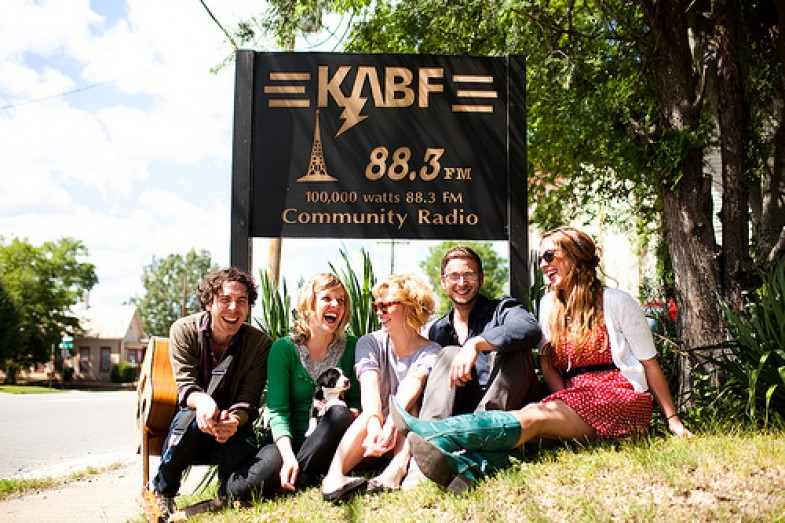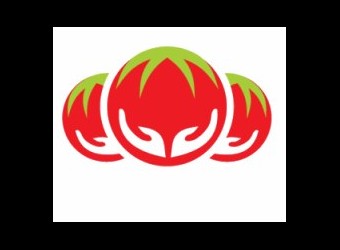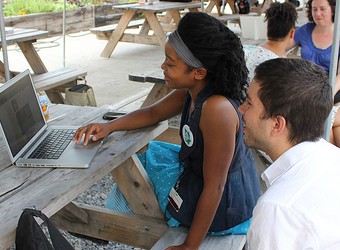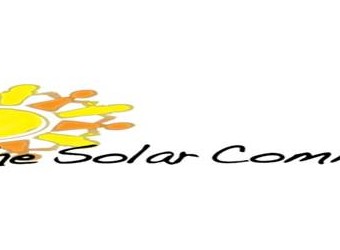“There’s More to Life than the Pursuit of Private Pleasure”:http://www.utne.com/community/reimagining-the-good-life.aspx
Ah, the Good Life. Fine wine. Fast cars. Beautiful people. The beach house on St. Bart’s. The ski chalet in Switzerland. The apartment overlooking Central Park. The ranch in Montana. The castle atop . . .
Dream on!
For the overwhelming majority of us, living like this is about as likely as pitching for the Yankees. Our days are not spent on the beach or the ski slopes, but rather commuting to work, struggling with bills, and perhaps sensing that the best things in life are passing us by. It’s easy to feel small and drab compared to the millionaires and movie stars whose exploits are chronicled across the media. Making money—lots more money—comes to seem the only way to ensure a meaningful life, a point hammered home incessantly by advertising, financial experts, and political leaders.
This rising obsession with getting and spending has prodded authors John de Graaf, David Wann, and Thomas H. Naylor to observe that “a powerful virus has infected American society, threatening our wallets, our friendships, our families, our communities, and our environment. We call the virus ‘affluenza.’ “
They define this affliction as “a painful, contagious, socially transmitted condition of overload, debt, anxiety, and waste resulting from the dogged pursuit of more.” In their insightful soon-to-be-published book, Affluenza: The All-Consuming Epidemic (Berrett-Koehler, $24.95), they report that in-creasing numbers of Americans are growing concerned about affluenza’s long-term symptoms—a view confirmed by the Merck Family Fund, whose national poll found that “there is a universal feeling in this nation that we’ve become too materialistic, too greedy, too self-absorbed, too selfish.”
Recovery from this condition starts with a realization that there’s more to life than the pursuit of private splendor. The good life cannot be measured just in dollars. Satisfaction cannot be sustained only within the tight circle of home and family. All of us live in the broader world. The vitality of our community, the direction of our nation, the health of our environment, and the ins and outs of everyday existence significantly affect personal happiness.
That’s the point behind Utne Reader’s Quality-of-Life Checklist: to highlight some of the social, cultural, aesthetic, spiritual, political, and ecological factors that enrich our lives. A stunning sunset or a beloved bookstore can be just as fulfilling as a fancy house full of expensive stuff. We hope this list inspires you to think about the things large and small that bring meaning to your life.
“A Quality-of-Life Checklist to Sort Out What Really Matters in Your World”:http://www.utne.com/community/a-quality-of-life-checklist.aspx?PageId=1#axzz2hG1Cbwpr
A fierce but friendly spirit of local patriotism We should all feel comfortable boasting about our hometown microbrews, amateur sports teams, theater companies, cuisine, architecture, nightlife, political accomplishments, and natural scenery.
The lost art of leisure Our lives should not be so ruled by the clock that we can’t occasionally take the scenic route, soak in the tub, hit the snooze button, or linger over coffee.
Great dividends on your tax dollars First-rate schools, libraries, parks, recreation facilities, transit, public health programs, and other government services make all the difference in a community.
Grins. Giggles. Laughter At home, on the street, in stores, offices, factories, schools, buses—everywhere.
Your very own Blair Witch The popularity of the Blair Witch Project attests to our craving for stories to which we don’t know the ending. This fits into a broader need for rekindling local history through the arts, the schools, the media, public monuments, and good old-fashioned storytelling.
A wealth of funky businesses The vitality of any community depends on an interesting array of idiosyncratic and often financially marginal little businesses: friendly diners, bookstores outfitted with old sofas, wild and woolly garden shops, affordable antique dealers, magic stores, art galleries, eccentric fashion boutiques, record stores with clerks who know their stuff, and cheap ethnic eateries from five continents.
Places far from the maddening crowd Quiet sanctuaries where you can watch sunsets, hear crickets, and see stars shining brightly in the night sky: woods, desert, lovers’ lanes, fishing holes, nude beaches.
Not-at-all-random acts of kindness Adequate public assistance, widespread charitable giving, effective social service agencies, affordable housing initiatives, and good wages.
Further evidence of deTocqueville’s enduring insight Bowling leagues, book clubs, religious congregations, and union locals bring us together, weaving the strong fabric of a healthy community. So do performance art collectives, immigrant associations, wicca covens, gay and lesbian pride committees, and active chapters of the Bobby Darin fan club.
A bit of vice to keep things interesting Bars that stay open til 4 a.m., gambling dens, relaxed enforcement of marijuana laws, dessert cafés, sexy diversions, and at least some spot around town that looks provocatively seedy. On the other hand, counseling programs and active 12-step groups are lifesavers to people for whom these pleasures become disasters.
Diversity with a capital D Immigrants, people of color, gays and lesbians, poor people, the elderly, plus free thinkers and free spirits of all stripes—these folks should not only feel welcome in the community but feel they have something to offer everyone else.
Ways to go out of your mind Modern society tends to imprison us in our heads, locked away from natural rhythms and a sense of spiritual wonder. Dance clubs, yoga studios, hiking trails, sports programs, and a relaxed pace of life can help us escape back into the realm of the senses and our bodies. A full platter of spiritual offerings—from high mass at a stately cathedral to impromptu meditation in a public garden—also remind us there’s more to the world than what’s rattling inside our brains.
The great American hangout The spirit of community is measured not by the number of your friends, but by the number of your acquaintances—folks you’re not likely to invite over for dinner but with whom you enjoy an occasional chat. This explains the importance of bustling shopping streets, block parties, public squares, pool halls, parades, and other places to bump into people from all walks of life.
Lovable eccentrics The sculptor whose medium is used baling wire. The world’s leading authority on Mr. Magoo cartoons. The old couple that spends five weeks decorating their yard for Halloween. People who have founded their own religions. You know the type.
Body and soul Easy access to massage therapists, natural food stores, homeopaths, tai chi classes, midwives, botanicas, archetypal therapy, and other holistic options, along with open-minded physicians and HMOs.
Safe streets Violent crime claws at the soul of a place. Community policing, which involves citizens in the job of protecting their neighborhoods, not only lowers crime rates but also raises community spirit. And safe streets mean protecting us from traffic as well as muggers. Traffic calming and strict enforcement of driving laws give pedestrians a sense of peace.
Salute to the seasons Solstice and equinox rituals. Singing-in-the-rain celebrations. May poles. Midnight swims on sweltering nights. Harvest festivals. Sledding parties.
Where the wild teens are It’s a balancing act to maintain places where kids can feel boisterously on their own yet not be hidden away from the rest of society. Skateboard parks, all-ages music clubs, open gym programs, and the old malt shop are among the range of possibilities. A local rite of passage, like climbing the water tower or swooshing down the ski hill in your skivvies, also instills youngsters with a sense of belonging in the community.
Our inalienable right to walk We Americans may love our cars, but that doesn’t mean we want to climb behind the wheel each time we venture out to buy a quart of milk. Everyone deserves to have a grocery, coffee shop, playground, hardware store, school, video rental, friend’s house, and Asian take-out restaurant within easy walking distance (or a manageable bike ride if you live in the country or outer suburbia).
Feisty local media Let a thousand voices rise. Community radio stations. Competing locally owned daily newspapers. Competing locally owned alternative weeklies. A flowering of community-minded Web sites and neighborhood newspapers. Arts reviews, satire rags, zines galore.
Brightness at the edge of town A definable spot where urban development ends and the countryside begins, ideally within easy reach of most households.
Graduate seminars in the meaning of life Ample opportunities to keep learning, ranging from adult education classes and personal growth workshops to helpful reference librarians and lively barroom discussions.
A commitment to making sure the kids are alright Children should figure in every decision made around town, from how neighborhoods are designed (sidewalks and crosswalks, please) to how our tax money is spent (playing fields instead of sports stadiums).
The sensuous city The sound of street musicians and church bells. The smell of blossoms and bakeries. The sight of children playing and adults kissing. The taste of organic local vegetables and unpolluted tap water. The feel of the wind in your face and grass beneath your feet.







